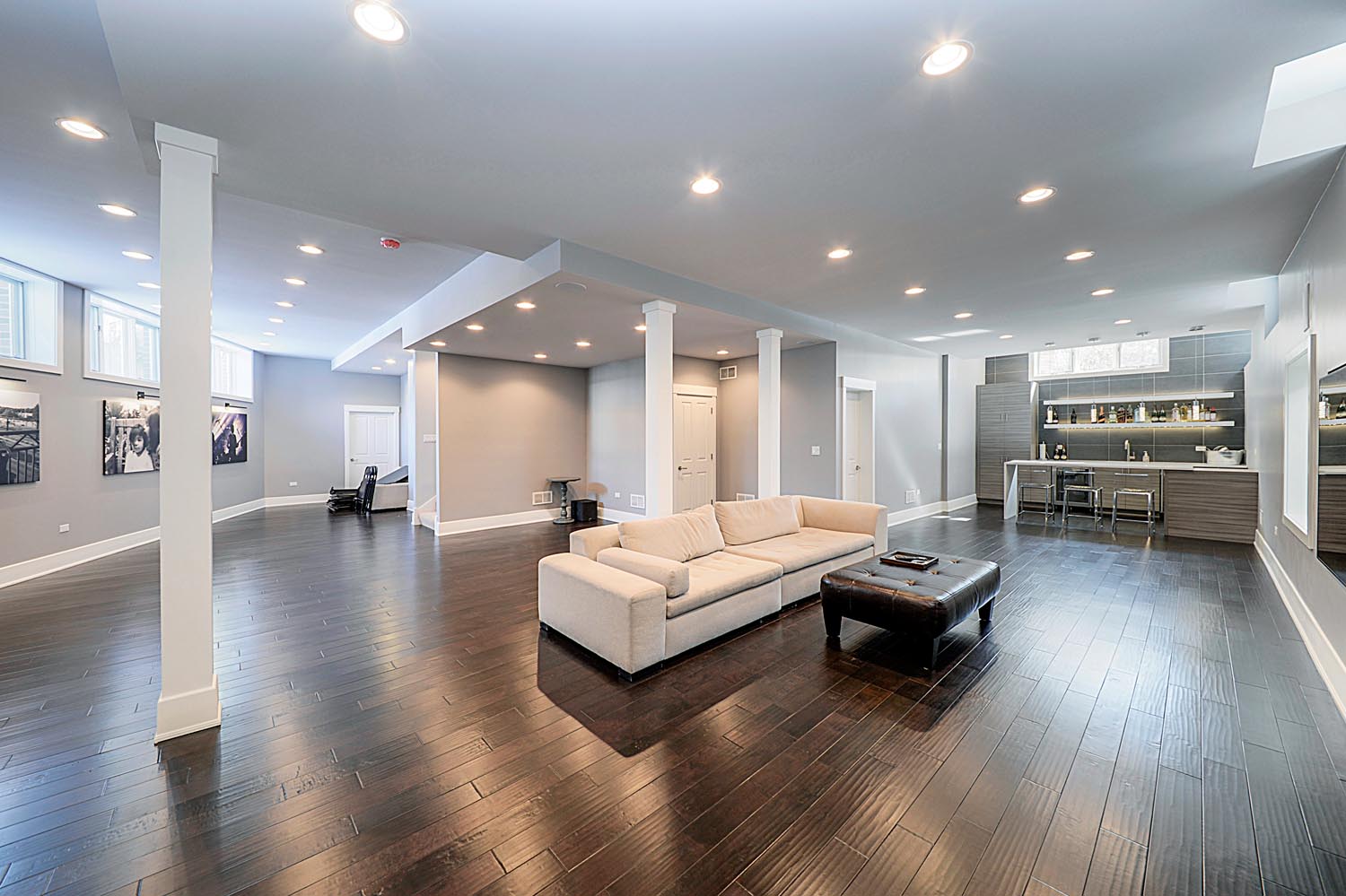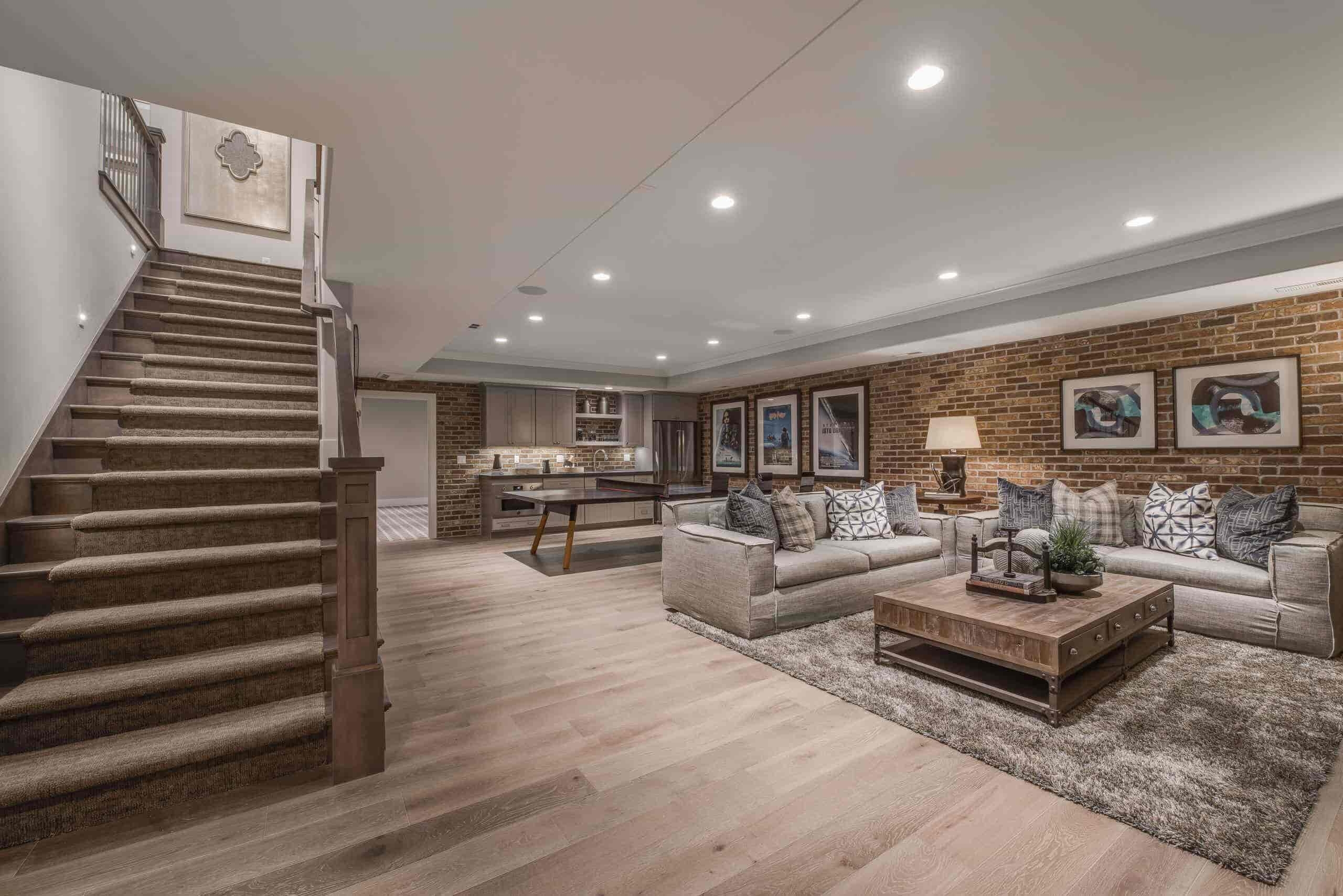Basement Interior Design Trends

Basement interior design – Basements have evolved from being mere storage spaces to becoming fully functional and stylish living areas. Today’s basement designs embrace a wide range of trends, each with its unique character and appeal.
When it comes to basement interior design, it’s crucial to consult with experts. For those seeking professional guidance, there are numerous interior design studios near me that specialize in transforming basements into captivating living spaces. These studios offer a range of services, from space planning to material selection, ensuring that your basement becomes an extension of your home’s aesthetic appeal and functionality.
Modern Farmhouse, Basement interior design
This trend combines the rustic charm of a farmhouse with the sleek lines of modern design. Natural materials like wood and stone are paired with clean-lined furniture and neutral color schemes. The result is a cozy and inviting space that feels both timeless and contemporary.
Industrial Chic
Exposed brick walls, metal accents, and vintage furniture give industrial chic basements a raw and edgy look. This trend is perfect for those who appreciate the beauty of imperfections and want to create a space that feels both stylish and lived-in.
Coastal Retreat
Bring the beach indoors with a coastal-themed basement. Light blue and white color schemes, natural textures like jute and rattan, and nautical-inspired decor create a serene and relaxing atmosphere. This trend is perfect for those who love the feeling of being on vacation.
Basement interior design can be challenging, but it’s also an opportunity to create a unique and inviting space. If you’re looking for inspiration, consider seeking out home decor services. Professionals can help you with everything from choosing the right furniture and accessories to creating a layout that maximizes space and light.
With a little planning, you can transform your basement into a comfortable and stylish retreat.
Mid-Century Modern
This trend is inspired by the design aesthetic of the 1950s and 1960s. Geometric patterns, bold colors, and organic shapes are all hallmarks of mid-century modern basements. This trend is perfect for those who want to create a space that is both stylish and functional.
Scandinavian Simplicity
Scandinavian design is all about simplicity, functionality, and natural materials. White walls, light wood floors, and cozy textiles create a bright and airy space that feels both inviting and calming. This trend is perfect for those who want to create a minimalist and relaxing basement.
Space Planning for Basement Interiors
/BB_DanversHome-62-5c294babc9e77c000128a45e.jpg)
The basement is often an overlooked space in the home, but it can be transformed into a beautiful and functional living area with careful planning. Space planning is essential for creating a basement that is both stylish and comfortable. Here are a few tips and techniques for maximizing space and creating a functional layout:
Defining Basement Areas
One of the first steps in space planning is to define the different areas of the basement. This will help you determine how to best use the space and create a layout that flows well. Some common areas in a basement include a family room, a home office, a playroom, and a guest bedroom. Once you have defined the different areas, you can start to plan the layout.
Maximizing Vertical Space
Basements often have low ceilings, so it’s important to make the most of the vertical space. One way to do this is to use built-in shelves and cabinets. These can be used to store items and free up floor space. Another way to maximize vertical space is to use furniture that is low to the ground. This will make the room feel more spacious.
Creating a Focal Point
Every room needs a focal point, and the basement is no exception. This could be a fireplace, a large piece of art, or a built-in entertainment center. The focal point will help to draw the eye and create a sense of order in the room.
Basement Floor Plans
There are a few different types of basement floor plans to choose from. The most common type is the open floor plan. This type of plan allows for a lot of flexibility and can be used to create a variety of different layouts. Another type of basement floor plan is the closed floor plan. This type of plan has separate rooms for different activities, such as a family room, a home office, and a playroom. The type of floor plan you choose will depend on your specific needs and preferences.
Creating a Basement with Multiple Functions: Basement Interior Design

The basement, often seen as a neglected and underutilized space, holds immense potential for transformation into a vibrant and multifunctional living area. By carefully planning and designing, homeowners can unlock the versatility of their basements, creating spaces that cater to a myriad of activities and needs.
A well-designed basement can seamlessly accommodate various functions, from entertainment and relaxation to storage and work. By considering the specific requirements of each activity and incorporating flexible design elements, homeowners can create a space that adapts to their changing needs over time.
Entertainment and Recreation
- Home theaters: Basements provide an ideal setting for dedicated home theaters, offering a cinematic experience in the comfort of one’s own home.
- Game rooms: Basements can be transformed into dedicated game rooms, complete with gaming consoles, board games, and comfortable seating for hours of entertainment.
- Bars and lounges: For those who enjoy entertaining, basements can be designed with built-in bars and lounge areas, creating a convivial space for social gatherings.
Relaxation and Comfort
- Home spas: Basements can be converted into tranquil home spas, featuring amenities such as saunas, steam rooms, and massage chairs.
- Meditation and yoga studios: For those seeking a serene retreat, basements can be designed as dedicated meditation or yoga studios, providing a calming and focused environment.
- Libraries and reading nooks: Basements can be transformed into cozy libraries or reading nooks, offering a quiet and comfortable space to escape with a good book.
Storage and Organization
- Storage rooms: Basements can provide ample storage space for seasonal items, bulky equipment, and other belongings, freeing up valuable space in other areas of the home.
- Workshops: For those with DIY projects or hobbies, basements can be converted into dedicated workshops, providing a dedicated space for creative endeavors.
- Wine cellars: Wine enthusiasts can create temperature-controlled wine cellars in their basements, ensuring optimal storage conditions for their prized vintages.
Home Office
- Private offices: Basements can offer a quiet and distraction-free environment for home offices, providing a dedicated workspace separate from the main living areas.
- Collaborative workspaces: For those who work from home with colleagues or clients, basements can be designed with collaborative workspaces, featuring meeting areas and shared resources.
- Home studios: Creative professionals, such as artists, musicians, and writers, can transform basements into dedicated home studios, providing a dedicated space for their work.